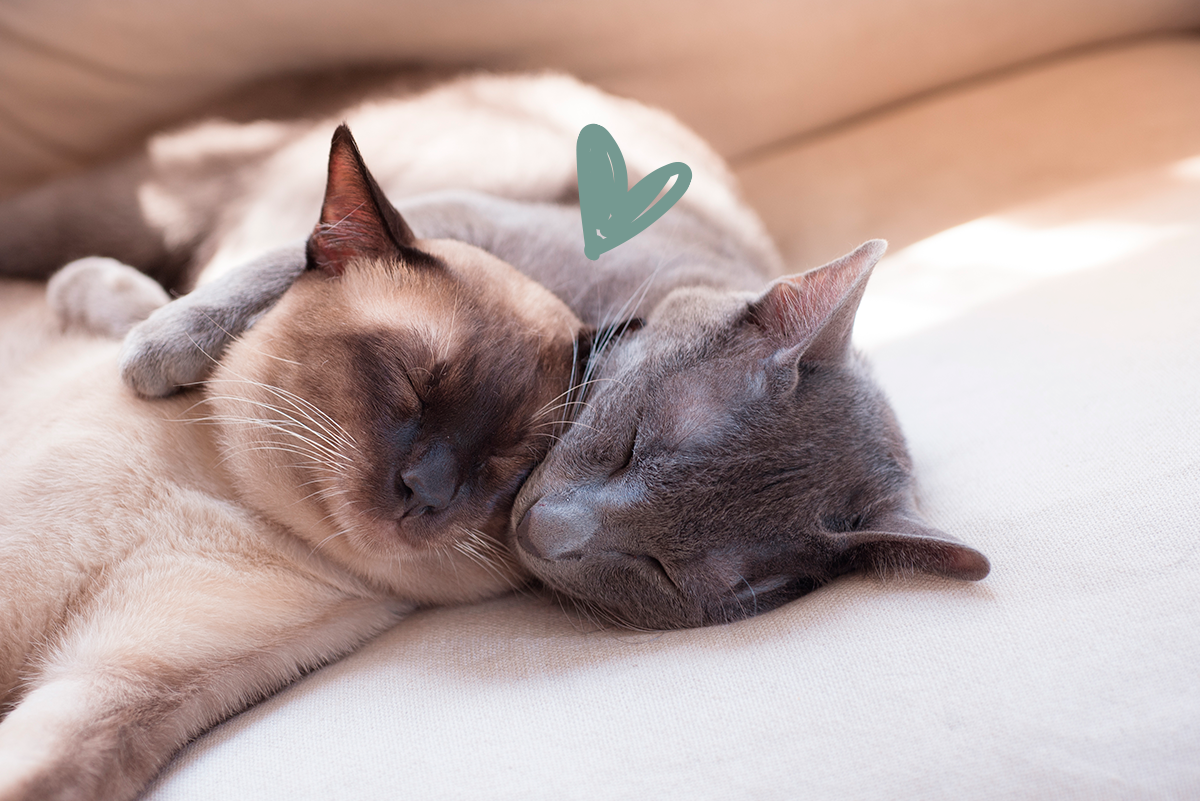
Is the colour of your cat’s coat related to its personality?
¿Se ha preguntado alguna vez si el color del pelaje de su gato está relacionado con su personalidad?
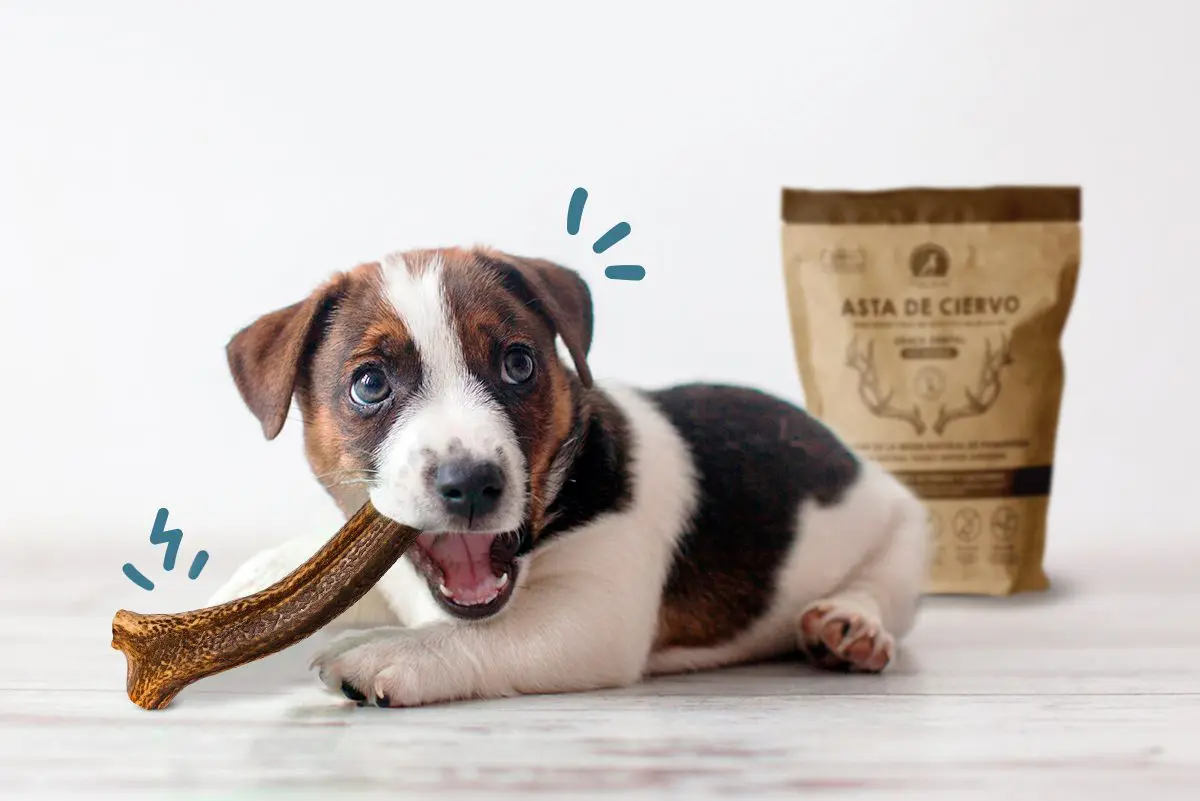
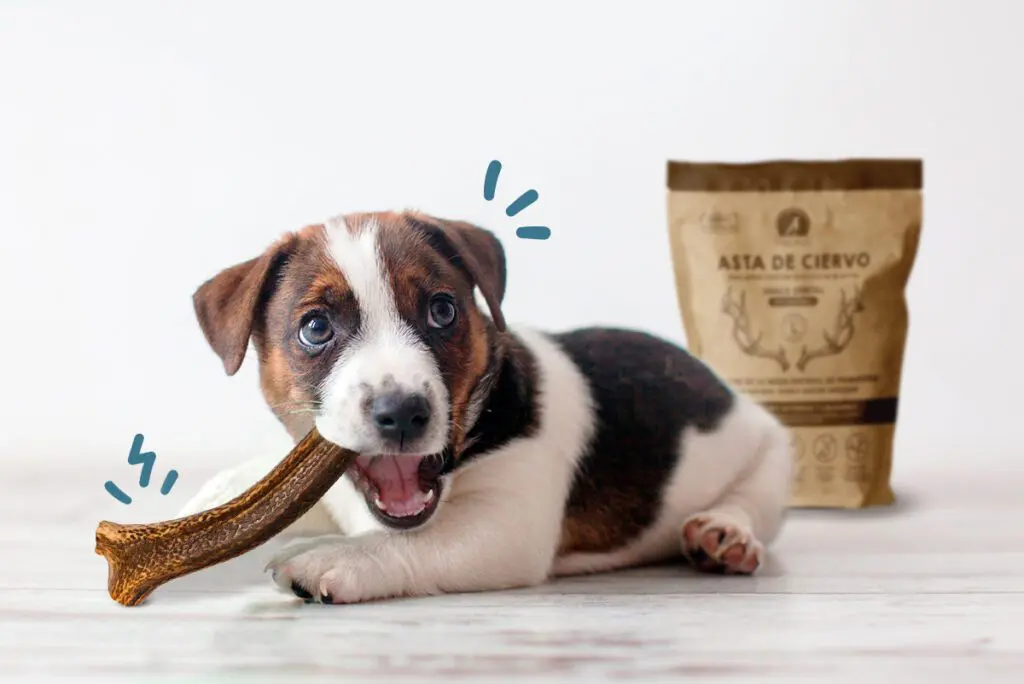
Dog toys are an essential part of our pets’ lives. Not only are they an excellent way to keep our pets entertained and stimulated, but if we choose the right toys, they can also be beneficial to their health. That’s why at MAIKAI, we advocate for the use of natural toys, ensuring the health and well-being of your pet. By selecting natural toys, you can rest assured that your pet can enjoy without the risk of toxic substances or harmful elements.
Moreover, these toys help keep your dog entertained and mentally stimulated, providing hours of fun while exercising their body at the same time.
There are different types of toys that suit the needs and preferences of each dog. When choosing a toy for our furry friend, in addition to it being natural, it is important to consider their size, age, and energy level. By making decisions based on our dog’s needs, we can promote their physical and mental well-being while strengthening our bond with them.
It is crucial to consider the size of our beloved dog when choosing the perfect toy for them. Each dog has its own needs and preferences, so selecting a toy appropriate for their size is crucial. This ensures the safety and fun of our pet.
By opting for a toy that fits their mouth and body correctly, we avoid any risk of choking or unnecessary injuries.
Small dogs have different needs than larger ones. Just as we adjust their diet, it is also essential to offer them toys and accessories designed specifically for them. Consider their size and strength and choose special toys tailored to their mouth and play abilities. For them, it’s important to have smaller and lighter toys that are easy to grip and chew. This ensures a safe and enjoyable experience for them.
Here is a selection of various ideal toys for small dogs (always natural, of course):
Chew toys are an excellent option to entertain and improve your dog’s dental health. By biting and chewing on these toys, a similar effect to dental brushing occurs, helping prevent the buildup of plaque and tartar on their teeth. These toys should be safe, durable, and resistant, as they offer a fun way for our furry friends to stimulate their minds and provide moments of joy. One of the main benefits of these toys for dogs is that they help satisfy your pet’s natural chewing instinct.
Dogs have an innate need to bite and chew, especially when they are puppies or anxious. By providing them with a sturdy toy like a chew toy, you give them the opportunity to channel that energy into something safe and appropriate.
In addition to the physical aspect, these toys can also be used as educational tools during training. You can use them as a reward or incentive to teach your dog basic commands. For example, you can use play with a toy to reinforce the “sit” or “come here” command. This makes the process more enjoyable for both you and your pet.
It is important to choose a chew toy of the right size for a small dog to ensure that your little furry friend can fully enjoy their playtime while avoiding possible accidents such as breakages or choking. Ideally, the chew toy should be small or medium-sized, and, above all, opt for natural materials that do not harm your dog’s health.
We recommend MAIKAI’s Small Size Deer Antler, which is not only 100% natural but also the perfect size and thickness for small dogs. Your furry friend is sure to enjoy it to the fullest!
Avoid chew toys with small parts that could come off and pose a choking risk. They should not be excessively hard, as this could break your dog’s teeth. Similarly, avoid those that are too soft, as your furry friend may risk swallowing pieces of the toy. If you want to ensure that your small dog does not run the risk of choking or ingesting inappropriate materials, you can opt for our lamb paws, an edible chew-treat that dogs love!
When choosing rope toys for small dogs, it is essential to consider their resistance level and jaw size to make them easy to grip and chew, without the risk of breaking or becoming a dangerous ingestion for our small dogs.
To ensure these toys are natural, carefully examine the materials of the product before purchasing.
Another option is to create your own rope toy for your dog—it’s very easy! Just cut three pieces of fabric, making sure they are not too thick to adapt to your small dog. Tie a knot with the pieces at one end, braid them, and close it with another knot. Making your own natural toy guarantees the perfect size adapted to your dog. You can even create various size variations and see which one your dog prefers; that will give you a clue about their perfect toy size!
Interactive toys for small dogs are an excellent way to keep our furry friends entertained and stimulated. These toys are specially designed to meet the play and exercise needs of our pets, providing them with hours of fun and joy. Moreover, these toys help develop their cognitive skills and strengthen their jaws, while promoting learning and problem-solving.
There are many types of interactive toys, made of various materials. Although it’s easy to be drawn to brightly colored ones with extravagant sounds, the best option is always to go for a natural product. Pay close attention to the materials of the toy, as certain plastics and dyes can be harmful to your furry friend.
The best way to ensure that the toy is ideal for your dog’s size and playability is to make it yourself. With toilet paper rolls, you can create a multitude of toys that fit your small dog perfectly.
For example, by making holes in a sturdy cardboard roll, covering the sides, and putting food inside, you can create a perfect interactive toy for your small dog.
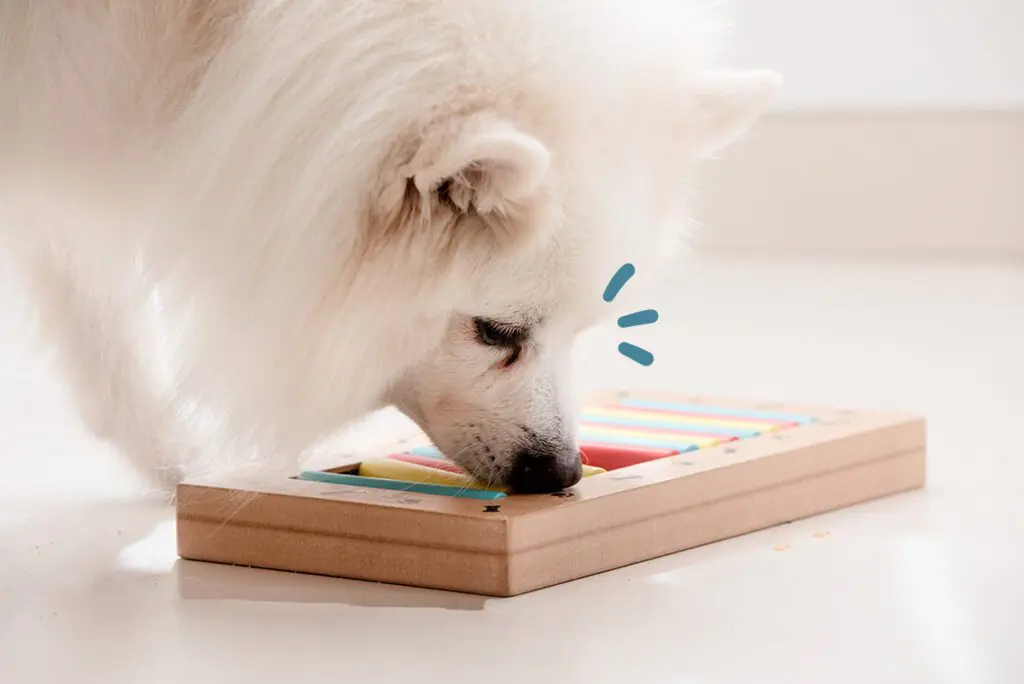
Technically, a puppy is a small dog, but when choosing a toy for our puppy, we must consider their specific play needs. The play encouraged during the puppy stage is crucial for their development as adults. Therefore, it is essential to promote healthy play and encourage activities that develop their cognitive capacity and provide a healthy outlet for their energy. Consider the age of the puppy when choosing their toy. If they are only a few months old, we should opt for soft materials, while a one-year-old puppy can (and should) play with harder toys that stimulate their jaw.
In addition to entertainment and fun, chew toys serve other key functions for puppies. On one hand, they help channel their energy. Puppies have a lot of energy, and sometimes it’s challenging for us to tire them out. Games that help expend all their extra energy will be welcomed. On the other hand, chew toys serve to alleviate the discomfort caused by dental development, in addition to maintaining good dental hygiene. For all these reasons, chew toys are a must-have in our beloved puppy’s repertoire.
Now, how do you choose the ideal one? As we’ve mentioned, depending on the puppy’s age, you should give them a chew toy with a softer or harder material. But in addition to age, you must consider the size and strength of your little furry friend, as giving them one that is too large or hard can be dangerous, even leading to tooth breakage. If your puppy is already around a year old, we recommend our Small Size Deer Antler—you’ll see how they won’t let it go!
Puppies have great curiosity and need mental stimulation. It’s very amusing to see how they approach each object or sound with so much excitement and interest, as if everything were a great adventure This is precisely why it’s crucial to provide them with activities and toys that allow them to exercise their minds, such as search games or puzzles, to keep them entertained and satisfied. Additionally, this mental stimulation not only makes them happy but also contributes to their cognitive development, helping them learn and adapt faster to their environment. This is why interactive toys for puppies are of special interest.
Not only do they provide fun and entertainment, but they also contribute to their physical and mental development. By choosing suitable toys for our puppies, we can ensure that they grow up happy, healthy, and free from destructive behaviors.

The best way to tire out a 2-month-old puppy is to provide enough physical and mental exercise. Play with them, take them for walks, and encourage active movement throughout the day. Additionally, provide interactive toys and search games to stimulate their mind. Remember that puppies need enough sleep, so don’t exceed their limits and give them time to rest properly.
An interactive toy for dogs is an object designed to stimulate and entertain dogs through interaction. These toys often have features such as sounds, lights, movement, or treat dispensers that keep dogs active and engaged in play.
A puppy should play for at least 30 minutes per day.
The ideal toy for your dog depends on their size, age, and preferences. Some popular options include rope toys for chewing, durable balls, interactive toys, or puzzles. Remember to choose a safe and durable toy that suits your dog’s needs.
An appropriate toy for a puppy is a soft chew toy, as it helps relieve teething pain and promotes good dental health.
The right toy always depends on your dog’s personality and physique. Consider their age, size, and energy level to choose the ideal toy. A chew toy (whether larger or smaller) will always be beneficial, as this type of toy helps satisfy the need to chew and play, promoting both physical and mental exercise.
To make your dog like a toy, introduce it positively and playfully. Play with the toy in front of them to pique their interest. You can also smear a bit of peanut butter or dog treats on the toy to make it more appealing. Remember to reward your dog when they play with the toy to reinforce their liking for it.
Dogs like to play, receive affection and attention, go for outdoor walks, explore new places, socialize with other dogs and people, and enjoy delicious meals.
A dog’s favorite toy can vary based on each dog’s individual preferences. Some dogs may prefer balls, while others may enjoy chew toys or plush toys. The choice of the ideal toy depends on each dog’s taste and specific needs.
A 3-month-old puppy can walk for around 15 to 20 minutes per day.
Dogs need toys because they provide mental and physical stimulation, help prevent boredom and destructive behavior, encourage interactive play with their owners, and promote a healthy lifestyle.

¿Se ha preguntado alguna vez si el color del pelaje de su gato está relacionado con su personalidad?
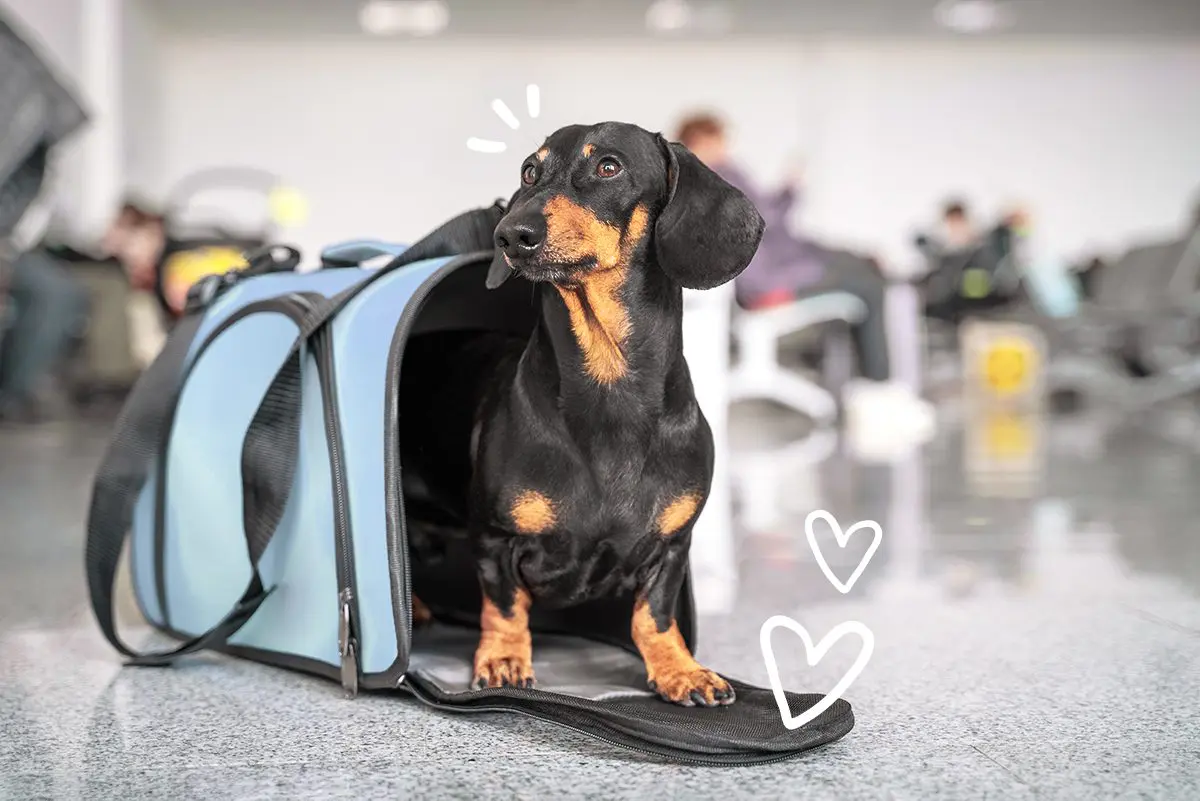
Planning our holidays is always complicated. Booking transport, hotel, buying tickets… A real gymkhana! If we add travelling

Today is a special day in Spain: it’s Mother’s Day! This day is dedicated to celebrating all the
Receive a 10% discount for subscribing.
Receive offers, news and tips for your furry friend.
*On orders over 39€ in Spain.
MAIKAI is a registered trademark by Mili Regdan International S.L.
Payment methods